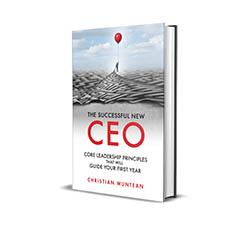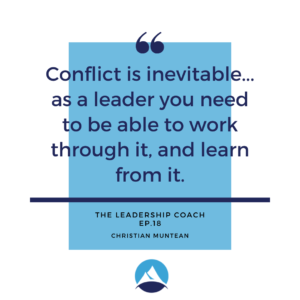The Cost Of Not Exercising Big and Small Picture Thinking

A story of perspective and leadership. Specifically, why leaders need to be able to see both the big and small pictures.
Once I got lost. Badly. In the 90’s, I lived in Bethlehem. My third-story apartment was on a hill, overlooking a valley that opened up to the east. Looking down through the valley, I could see groves of olive trees. The groves eventually gave way to gently rolling hills covered with farmers fields.
In the distance I could see the conical shape of Herodium. This mini-mountain was a dual purpose palace/fortress built by the Biblical Herod the great. Beyond Herodium were the hills of the Judean Desert. Beyond those, the Jordanian mountains on the other side of the Dead Sea. Unseen, between the Judean Desert and the Jordanian mountains, rests the Dead Sea. The lowest point on earth.
With some friends, we decided to hike from Bethlehem to the Dead Sea. From the view of my apartment (and the water-colored map in the back of someone’s Bible) it appeared simple. We could see a road, and there were rolling hills. As the crow flies, it’s a 15-mile trip. We calculated we’d arrive at the Dead Sea in four, maybe five, hours.
One morning, bright and early, we packed a lunch and a little water, and headed out.
What We Didn’t Know
Bethlehem is located on a range of low mountains. As previously mentioned, the Dead Sea is the lowest point on earth. Between the two is a tremendous loss of elevation. As it turns out, whole mountains and valleys existed between here and there. Which we couldn’t see. What we discovered, in fact, is that after Herodium, the roads petered out.
The Judean Desert grew into a twisted maze of small mountains, often deeply divided by steep gorges or wadis. These were sometimes so steep and narrow that, in places, I could reach out and touch both sides. The wadis didn’t run in nice, long, straight lines like the valley out of Bethlehem. No, they twisted viciously back and forth on each other like an angry snake. Which meant that, to cover a half mile as the crow flies, it could take several miles of actual trekking over hard terrain.
We were soon so turned around, we didn’t know where we were. Using the sun for bearings – we kept heading east trusting that we’d eventually hit the Dead Sea. But it was anybody’s guess when and where. Lunch (and water) had been consumed hours earlier. As the sun passed its zenith and headed west, survival emerged as an unpleasant question.
Leadership and Perspective: Big or Small Perspectives?
Some leaders are naturally big picture people. Like myself, they stare out of the bedroom windows dreaming about what could be. Where they could be. And (maybe) how to get there. Some leaders are naturally small picture people. Like myself (under duress), they are trying to find their way over rough rock and twisted terrain.
It takes the big picture to provide a sense of possibility, overall bearings, and to motivate. Without it, there is no vision or aspiration. Work feels like a daily run on the hamster wheel. Enormous effort, no discernable progress. These workplaces often are characterized by a sense of hopelessness or complacency. But without knowledge or appreciation of the small picture, the “on the ground” experience – it’s easy for the big picture to miscalculate the experience. To be poorly prepared. To not understand the actual risk or effort required to succeed.
Leaders Need Both
Ultimately, and with great effort, we ended up sending one of us scaling the sides of a wadi to the top. Because I had experience in the mountains, I ended up doing most of this. From the top, I had some kind of view. I could attempt to recalculate our bearings and adjust our navigation. I’d try to be encouraging about progress and how “we were almost there!” Because it was impossible to traverse the tops of the mountains, I was forced to drop back into the wadi, to join the others, to continue our winding journey.
Leadership Rhythms
I made many trips up and down the sides of these wadis as we traveled. It was exhausting.
Leaders need to be willing to make these trips. Up and down. You have to be willing to stop progress and climb and gain elevation – to gain perspective on progress made, corrections (or verifications) to your course, and the next goals to be attained. You also have to be willing to run down the mountain, into the wadi, and slog it out in the “real world” where progress is often less linear and more serpentine. All of the leaders I work have a preference. Some prefer to be up on the mountain. Some prefer to be down with the team, working out the details.
Both are needed.
Lessons Learned
- A Big Picture Creates a Pull (Small Pictures Usually Respond To A Push): A pull creates motivation. A push causes a reaction. Both are powerful – but a pull best draws people to a predictable destination.
For leaders, you cannot lead without a Big Picture. Even a badly drawn one. There is no horizon without one, no place to move towards.
- A Big Picture Needs To Be Well Informed By The Small Picture: A view out a window and a water-colored map in the back of a Bible were poor sources of information. Neither gave us any perspective of the small picture.
A topographical map, or a conversation with someone who had been there, would have helped us greatly.
- Build The Relationship Between Strategy and Execution
There has to be communication and learning between the big picture goals and the small picture of what it takes to make them happen. There needs to be a dance between the two, where both inform and influence each other.
- You Don’t Have To Originate It – You Do Have To Assemble It
Some leaders naturally think Big Picture. They are often viewed as “natural” leaders. But without further input, they can miss small picture details that matter. They need to assemble those.
Interestingly, many effective leaders are actually Small Picture. But they are good at talking to others, identifying components of a Big Picture, and from those conversations, they assemble an inspiring Big Picture (or they hire someone to help).
Whatever your preferences, you need it.
- Leadership Must Become Your New Expertise
Most leaders become leaders because they are experts at something that is not leadership. If you are now a leader, this must become your new area of expertise. Specifically: Helping everyone else accomplish more and achieve the vision – together.
Your former expertise has value. But it won’t be the difference that makes the difference. Leadership will. And your ability to step away from your expertise and climb the mountain. And then reengage and motivate your people to keep moving.
You should study and practice this. You’ll discover that leadership, when done well, looks effortless. In fact, it looks so easy, people assume that it is natural or no effort is required. But you’ll know the truth. This new expertise was earned.
Obviously, I’m Not Dead
As the sun was starting to set, we finally emerged at En Ghedi (where the Dead Sea Scrolls were discovered). We stumbled upon some Israeli rock climbers. We must have looked rough, because they immediately grabbed a jerry can of water and ran to us.
It was dark by the time we made it to the Dead Sea. Shabbat (Sabbath) had started. The busses back had stopped running. Fortunately, we were able to flag down a taxi. It was very late by the time we made it home.
I learned a lot about assumptions and planning on that journey. I also learned we would never have tried without the vision. I don’t regret it at all. But our poor planning and lack of small picture knowledge – very nearly killed us. Which I wouldn’t have liked.
So, both are needed.
Take good care,
Christian
Further reading:
How To Overthrow The Tyranny (Of The Urgent)
Vision Building Sprints
If you or your team are wrestling with defining your vision and would like help, I’m offering the opportunity for a “Vision Sprint”. This is a dynamic calibrating exercise. We will tightly dial in on your vision for the year and the key steps you need to take to get there. I’m offering either individual sessions ($2500) or team sessions ($4000).
Contact me at christian@christianmuntean.com if interested in learning more or setting up a time.
The Successful New CEO – FREE BOOK OFFER
As an executive coach, I’ve found that the experiences for new executives (or experienced executives in new roles) tend to touch on familiar themes. No one’s situation is the same. But there are common principles that, when followed, do guide executives to success. I introduce those core principles in my new book, The Successful New CEO. I’d like to give you a free copy (just pay shipping)!
situation is the same. But there are common principles that, when followed, do guide executives to success. I introduce those core principles in my new book, The Successful New CEO. I’d like to give you a free copy (just pay shipping)!
The book is divided into four parts:
- Becoming an Executive: Leaders can only lead out of who they are. How do you become the kind of person who successfully and gracefully inhabits this role?
- Seven Essential Executive Skills: The skills that earned you this new role may not be the ones that you need in the role. What are the key leadership skills that become even more important at the executive level?
- Leading Your Leadership Team: More than likely, you’ll be leading other leaders. How do you lead a confident, effective leader? How do you build a team out of leaders?
- First Things: Where do you start? How do you quickly build credibility and engagement? What is too fast or too slow?
The goal of The Successful New CEO is to help you quickly gain the confidence of your team, successfully address the issues you will discover, score early wins, and set a course for a fruitful future.
If you’d like to see how this book will benefit you or someone you know, I’d like to make it available to you for free! Click Here.
Find the value of your company with my free assessment tool: The Value Builder System
The Value Builder System™ is a 13-minute online questionnaire that evaluates your business on the eight factors that contribute more to its attractiveness and value. These factors are scored on a scale of 1-100. Businesses that score over 80 are likely to command 70%-100% higher value than others.
In my podcast, THE LEADERSHIP COACH, we explore effective, high impact and enjoyable leadership. We talk about personal development and the attributes that all effective leaders possess. I interview other leadership experts who share their knowledge and tips to help you build the confidence to lead and learn the habits of good decision-making.
Opportunities
Free Resource: How To Accomplish More Without Doing More is a workbook I created to walk leaders through a process of helping you own your calendar, liberate your time, and still get more done. Download it for free!
Executive and Leadership Coaching: Do you feel overwhelmed? Are you not getting the results you expect from the effort you are putting in? Do you find yourself facing similar challenges time and time again? Would you like to change specific ways of relating or reacting? If you would like to experience predictable, measurable growth Contact me.
Profitable Exit Strategy Workshop: Are you a business owner or partner? Are you over 55? Are you starting to think about exiting your business or active management in the next 3-5 years?
- Are you curious about what your business might be worth?
- Would you like to discover the specific steps you need to take to increase its value and become highly attractive to a buyer?
- Are you planning on handing it over to family or employees and you want to ensure long-term success?
If so, contact me now
Categories
Get Christian’s Newest Book: Train to Lead

Download my free 10-page eBook:
How To Accomplish More Without Doing More:
Eight Proven Strategies To Change Your Life
Discover how to save eight hours during your workweek-even if you're too busy to even think about it. The resource every maxed out executive needs.
